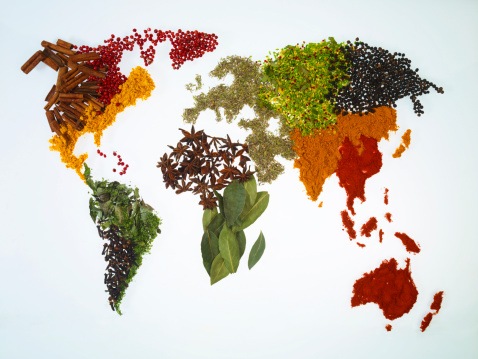Have you learned your one thing new for the day yet? Here, let me help! There are some ingredients that have been banned from the food supply in other countries, but are allowed in food products in the United States. And vice versa – there are also food ingredients that are banned in the US (like cyclamates, the low calorie sweetener) that are approved throughout the world. Is this something to be worried about?
When it comes to banning food ingredients, not only science, but public opinion, animal welfare, and politics can all play a role. So a “food ban” for certain foods doesn’t automatically or actually mean that the food is unsafe to eat.
Curious about what kinds of items fit these qualifications? Here are six common ingredients that are banned in other countries, but approved for use in the U.S.:
1. Brominated vegetable oil (BVOs)
Where its found: Some citrus-flavored sodas and sugary drinks. BVOs are used as an emulsifier to keep the citrus and other ingredients mixed in solution.
How to avoid it: Read the ingredient labels on all citrus-flavored drinks. The Coca-Cola Company announced this week the removal of BVO from its Powerade Line and Pepsi also said it was removing the controversial ingredient from Gatorade drinks.
2. Potassium Bromate
Where its found: Some breads, pizza dough, and rolls
How to avoid it: For cooking at home, choose flours that are potassium bromate free. Read labels on packaged breads and frozen doughs. In a restaurant, ask what type of flour is used.
3. Food colorings/dyes (Blue #1 and #2; Yellow #5 and #6; Red #40)
Where its found: Many drinks, cereals, salad dressings, candies, and processed foods
How to avoid it: Read the package labels for any added artificial food colorings or dyes. Choose organic products, or look for labels that describe using vegetable colorings only.
4. BHA/BHT (Butylated hydroxyanisole/Butylated hydroxytoluene)
Where its found: Used in some breads and rolls as a preservative.
How to avoid it: Read package labels.
5. Bovine growth hormone — rBST
Where its found: In about a quarter of the milk and dairy foods produced in the United States.
How to avoid it: Look for labels that say “no added hormones”. All milk naturally contains some growth hormone (including human milk). Choose organic milk for milk that is FDA-regulated to be added-hormone free. In this ingredient’s case, animal welfare seems to be the main concern, not food safety.
6. GMO or genetically modified organisms
Where its found: Most corn and soybean products; protein bars, cereals, vegetable burgers, and snackfoods.
How to avoid it: Look for organic foods, which are FDA regulated to exclude use of GMO ingredients. Choose packaged foods with a non-GMO verified label.
The most important thing is to be an informed consumer. You are in good hands here in the U.S., as the safety of the country’s food supply is based on a set of detailed rules and regulations established by the FDA. Sometimes, the USDA and EPA offer input as well. If you are concerned, pay close attention to labels, ask questions, cook fresh foods at home, and eat or shop organic.
(Photo credit – Getty Images)


Comments
Loading…